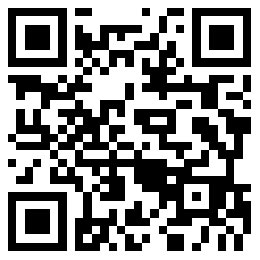社交媒體時代數(shù)字營銷黃金法則

|
????對于那些希望在互聯(lián)網(wǎng)上獲得關(guān)注的公司而言,,數(shù)字時代的關(guān)注就是“贊”、“微博”和“瀏覽量”,。受眾是衡量品牌價值的新貨幣,。但在喧鬧紛亂的社交媒體、博客文章和更新之中,,公司如何才能讓人們注意并聆聽它們的營銷信息,?如何才能克服公眾對廣告的不屑與懷疑,即便這些廣告披上了數(shù)字時代的外衣,? ????當然,,這里有很大的障礙。但不論結(jié)果如何,,這一點還是可以做到的,。 ????上周早些時候,LinkedIn舉行了一場由營銷公關(guān)專業(yè)人士參加的會議,,討論如何使用LinkedIn(這是當然)推廣品牌,,讓它們能在網(wǎng)上被聽到。會上滿是各種營銷辭令和一些狡詐的點子,,比如,,使用博客文章將營銷信息與讀者真正希望讀到的內(nèi)容(比如就業(yè)建議或菜譜等)融合在一起。對于那些本職工作就是給公眾洗腦的人們而言,,這些無疑是天籟之音,。而那些被動接受這些信息的人們,,則需要慎重思考Facebook、Twitter和LinkedIn上出現(xiàn)的內(nèi)容,。 ????下面就是一些值得關(guān)注的要點: ????1.內(nèi)容太多太多了 ????在數(shù)字時代,,要讓自己的聲音穿過所有這些喧嘩被公眾聽到,實在太難了,,特別是很多喧嘩都是一些強推自身內(nèi)容的公司觸發(fā)的,。“人們在談?wù)撊绾螠S為不專心駕駛的犧牲品,,”前電視主持人凱蒂?庫瑞克表示,。她由衷地感嘆,要跟上所有這些內(nèi)容,,簡直難于上青天,。“我感覺就像一個不專心生活的犧牲品,。信息實在太多了,。”的確如此,。一些營銷者喜歡通過博客將公司信息傳達出去,,另一些人則避免這么做。后者不應(yīng)被迫發(fā)表此類博文,,這只會增加一些無價值的喧嘩,。歸根結(jié)底:除非你有話要講,否則就不要在社交媒體上發(fā)聲,。 ????2.但加入對話會產(chǎn)生流量 ????有點矛盾,?但發(fā)聲不一定要寫長篇大論的博文。LinkedIn發(fā)言人凱瑟琳?費雪表示,,在社交網(wǎng)絡(luò)上更新狀態(tài)或分享有趣的故事也同樣有效,。在多個網(wǎng)站上現(xiàn)身并發(fā)帖可以創(chuàng)造受眾。但最好不要增加信息混亂,,不要投入很多精力寫一些很少有人看的博文,。你可以寫一些短而好的文字。放任不管固然可怕,,但如何授權(quán)員工在社交媒體上進行分享也很重要,。“員工具有難以置信的影響力,,”LinkedIn CEO杰夫?維納說,。但是,等等,!這不是違反了第一點嗎,?早已有太多的營銷信息,。 ????3.好內(nèi)容須真誠 ????真實可信的營銷信息才是好內(nèi)容。它們不談?wù)撘豢町a(chǎn)品,,也不吹噓正在賣這款產(chǎn)品的公司,。它們與人對話,與它們的情緒對話,。這會被聽到,。或者,,每個人都是這么說的,。“好內(nèi)容總會像病毒一樣快速傳播,,”庫瑞克表示,。如今她在為雅虎公司(Yahoo)主持一個數(shù)字新聞節(jié)目。安全軟件生產(chǎn)商賽門鐵克公司(Symantec)的首席技術(shù)官鮑勃?謝克解釋了真實可信的基石,。他從未為產(chǎn)品撰寫文章,,正因為如此,讀者信賴他(或者,,至少他是這么說的)?!斑@關(guān)乎感情,,”他說?!皠?chuàng)造內(nèi)容,,關(guān)乎如何捕獲人們的內(nèi)心?!闭f的沒錯,。當然,我們不會問這些內(nèi)容需要具備多大的可信度,,才能代表你的公司捕獲人們的內(nèi)心,。(財富中文網(wǎng)) ????譯者:早稻米 |
????These days, for companies trying to get attention online, it’s about likes, tweets, and views. Audience is the new currency for measuring a brand’s value. But how do companies get people to sit up and listen to their marketing messages amid the din of social media, blog posts, and updates? And how do they overcome the public’s well-deserved cynicism about advertising, albeit gussied up for the digital age? ????There’s big hurdles, of course. But for better or worse, it can be done. ????Earlier this week, LinkedIn hosted a conference for marketers and people in public relations, about being heard online by using LinkedIn (of course) to promote their brand. There were a lot of marketing-speak tossed around and loopy ideas like blog posts that blend marketing with what the readers really want to read about like career advice or recipes. It was music to the ears of people whose job is its to brainwash the public. For those of you who are subjected to their wisdom, well, just think twice about what pops up in your Facebook, Twitter and LinkedIn feeds. ????Here are the takeaways: ????1. There’s way too much content ????Getting heard through all the chatter is tough in the digital age especially when a lot of the chatter is corporations trying to promote their own agenda. “People talk about being the victim of distracted driving,” former television host Katie Couric said, bemoaning how difficult it is to stay on top of all the content that’s out there. “I feel like a victim of distracted living. There’s just so much out there.” Amen. Some marketers love blogging to get their corporate message out and others shy away. The latter shouldn’t be forced to blog because they’ll just be adding to the babble. Bottom line: Don’t go on social unless you have something to say. ????2. But joining the conversation generates traffic ????Paradoxical right? But speaking up doesn’t have to involve writing long blog posts. Catherine Fisher, a spokeswoman at LinkedIn, pointed out that updating a status on a social network or sharing an interesting story can be just as effective. Showing up and publishing on multiple sites can generate an audience. Better yet, you don’t add to the clutter or invest a lot of energy writing blogs that few people will read anyway. You can just do something short and sweet. And, as frightening as it is to let go, it’s important to empower employees to share on social media. “Employees are incredible influencers,” said LinkedIn CEO Jeff Weiner. But wait! Doesn’t that violate rule one that there’s too much marketing babble out there already? ????3. Good content is genuine ????Good marketing messages are authentic. They don’t talk about a product or boast about the company selling it. They speak to people and their emotions. And that gets heard. Or so everyone said. “Good content always goes viral,” said Couric, who now hosts a digital news show for Yahoo. Bob Shaker, CTO of security software maker Symantec, explained the underpinnings of authenticity. He never writes about the product, and because of that, readers trust him (or so he says). “It’s about emotions,” he argued. “Creating content is about capturing people’s hearts.” Good to know. And of course, we won’t ask how authentic it is to capture people’s hearts on behalf of your corporation. |
-
熱讀文章
-
熱門視頻











